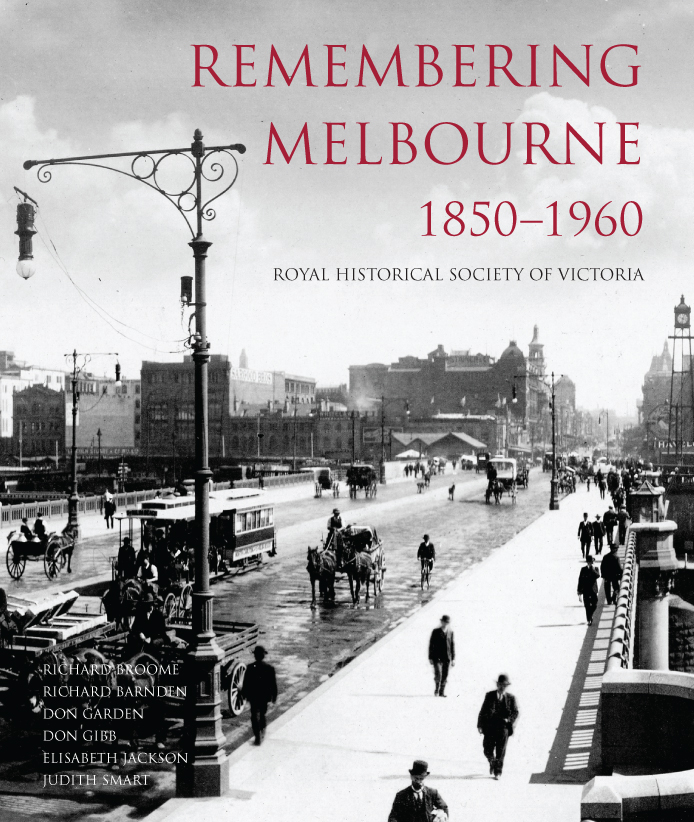Cover image: Panoramic view of Melbourne looking north from the south end of Princes Bridge, Melbourne, c. 1900
Robert Vere Scott photographer: RHSV S-1336
On Melbourne Day, 30 August 2018, the updated version of Remembering Melbourne 1850-1960 was launched at the RHSV and is now on sale.
This stunning book, which sold out at the RHSV in just four weeks, is currently available to enhance your book shelves and delight those who receive it as a gift.
All proceeds from sales will boost our growing Victorian Historian Journal Future Fund, aimed to secure our century-old journal, currently the second oldest, continuously published, history journal in Australia
About Remembering Melbourne: 1850-1960
Melbourne has been reshaped since the 1950s, the completion of ICI House in 1958 being symbolic of this magnificent 19th-century city. This book, Remembering Melbourne 1850-1960, captures what has been lost and forgotten, concealed and overlaid, demolished and reborn, in the transformation of a city’s buildings and streetscapes.
It is a unique book, for it reveals in over 700 photographs the face of fourteen of Melbourne’s finest streets, and also its lanes and little streets, its parks and gardens, and of course the Yarra. Besides this, it presents key buildings and streetscapes of twenty of Melbourne’s iconic suburbs.
Each street and suburb is introduced by a short essay written by an expert, catching the essence of that precinct. These authoritative introductions, written by over 30 history practitioners working pro bono, provide a context for the magnificent photographs to follow. There are also introductory chapters on Aboriginal Melbourne, on how the city was shaped, on the city and suburbs as a whole, and on how Melbourne and suburbs were captured by the camera, which was born at the same time as the city.
Every photograph is identified and explained in extended captions written by over 75 volunteers from twenty suburban historical societies and the Royal Historical Society of Victoria, the latter being Melbourne’s history society. Caption writers also assisted in the final selection of photographs.
The book, an imaginative collaboration by the Royal Historical Society of Victoria and the Queensland Book Depot, and based on the voluntary efforts of over 100 people, has established a new benchmark in recording the early history of one of the world’s most liveable cities.
The photographs within this book will endure here, and in the collections of Melbourne’s historical societies from which they were drawn, long after many of the buildings pictured have been reduced to rubble. It is a priceless trove of a city’s memory.


 239 A'Beckett Street Melbourne, Victoria, 3000
239 A'Beckett Street Melbourne, Victoria, 3000  03 9326 9288
03 9326 9288  office@historyvictoria.org.au
office@historyvictoria.org.au  Office & Library: Weekdays 9am-5pm
Office & Library: Weekdays 9am-5pm

